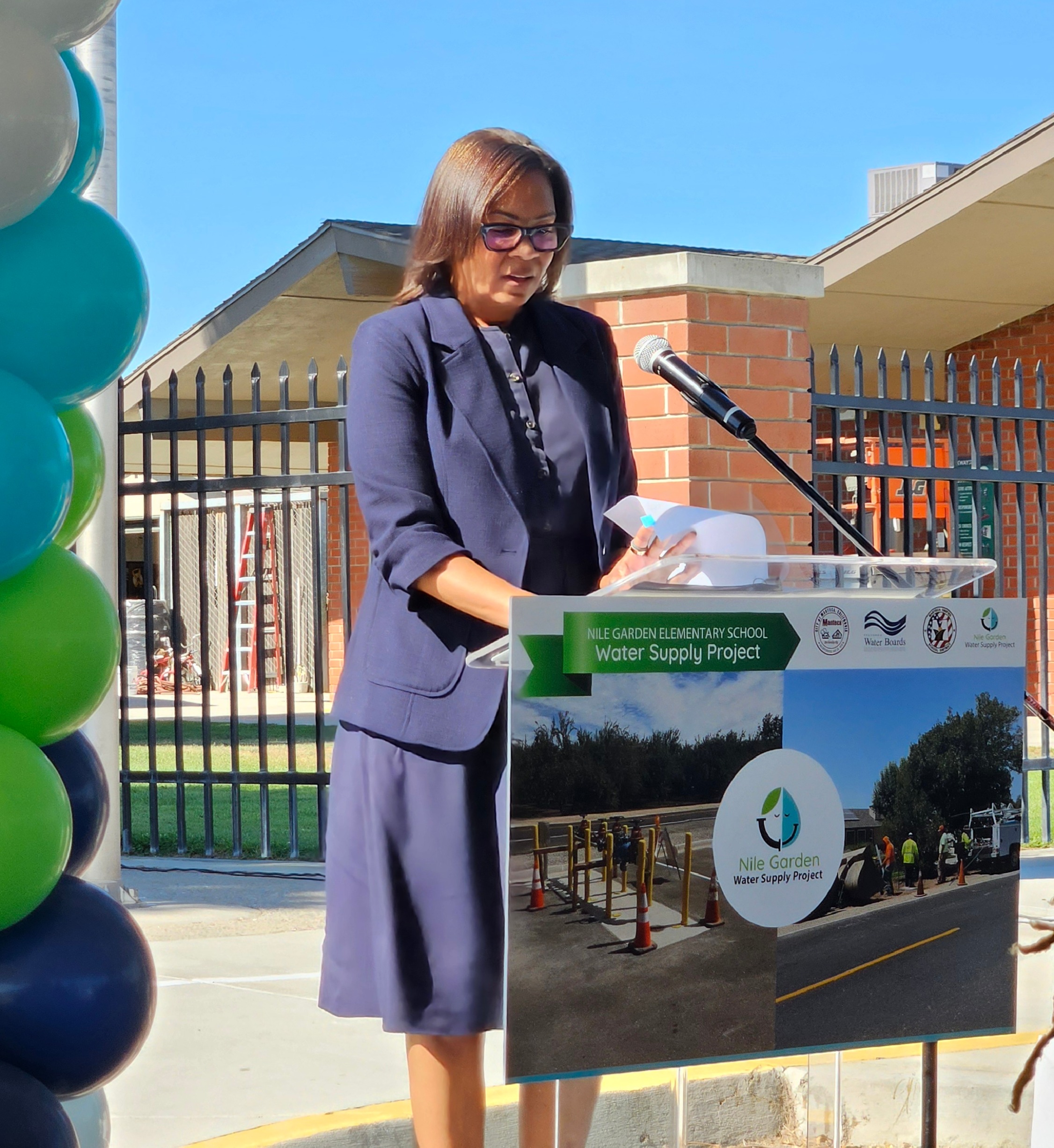Two more small rural communities to join 98% of Californians who have safe drinking water
State Water Board gains ground with most challenged water systems
SACRAMENTO – The State Water Resources Control Board this past week joined two small, disadvantaged communities with longstanding water infrastructure problems—the town of Robbins in Sutter County and Nile Garden Elementary School in San Joaquin County—to celebrate major milestones on their journeys to a sustainable supply of safe and affordable drinking water.
For the first time since 2017, Nile Garden School will have a reliable supply of safe drinking water when its 800 students and faculty return in August. After resolving multiple project complications since the pandemic, laying over a mile of new transmission line and building a new treatment facility, the City of Manteca completed the consolidation of the school’s water system this summer.
The State Water Board provided technical support to the city and over $9 million to fund the project through grants from its Safe and Affordable Funding for Equity and Resilience (SAFER) program.
“Thanks to your persistence and dedication, Nile Garden School and the community of Manteca will have a more secure future,” Board Member Nichole Morgan said to faculty and city staff Tuesday at the school’s ribbon-cutting ceremony. “Achieving safe drinking water can be challenging. Through our SAFER program, now in its sixth year, we are leveraging funding, technical assistance and our collective experience to make headway on projects for communities and schools like yours that have gone without safe drinking water for the longest periods.”

Board Member Nichole Morgan addresses Niles Garden community at its ribbon cutting on July 29.
Over the past twelve months, 26 communities and schools without access to safe drinking water for six years or more have returned to compliance with drinking water standards, benefiting over 68,000 people. The SAFER program provided over $66 million for water infrastructure projects in these communities that helped secure safe drinking water.
Overall, since the SAFER program began in 2019, the board has provided over $1 billion for projects in disadvantaged communities. More than 300 water systems have returned to compliance with drinking water standards, improving access to safe drinking water for over 2 million Californians. During this same period, nearly 160 consolidations were completed, benefiting more than 300,000 individuals.
Robbins, which has received state-funded hauled and bottled water since its groundwater wells exceeded arsenic levels in 2015, broke ground last Thursday on a new $8 million treatment facility funded through grants from the SAFER program. The Golden State Water Company acquired the failing system, successfully applied for state funding and is managing the project, which is expected to supply safe drinking water to the town’s more than 400 residents by 2027.
“Golden State Water's acquisition of the Robbins Water System, as well as the State Water Board's grant funding, signaled a new era for the community by providing a pathway to deliver quality water and reliable service to Robbins residents,” said Sean Twilla, general manager of the Golden State Water Company Northern District.
SAFER’s progress toward achieving safe drinking water for all Californians advances Gov. Gavin Newsom’s commitment to upgrade and build more infrastructure faster across the state.

The State Wate Board joined Golden State Water Company and Robbins community for its groundbreaking on July 24.
The State Water Board’s mission is to preserve, enhance and restore the quality of California’s water resources and drinking water for the protection of the environment, public health, and all beneficial uses, and to ensure proper resource allocation and efficient use for the benefit of present and future generations.


